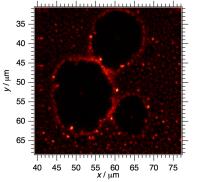Article,
Full space device optimization for solar cells
Scientific Reports, 7 (1): 11984-- (2017)
DOI: 10.1038/s41598-017-12158-0
Abstract
Advances in computational materials have paved a way to design efficient solar cells by identifying the optimal properties of the device layers. Conventionally, the device optimization has been governed by single or double descriptors for an individual layer; mostly the absorbing layer. However, the performance of the device depends collectively on all the properties of the material and the geometry of each layer in the cell. To address this issue of multi-property optimization and to avoid the paradigm of reoccurring materials in the solar cell field, a full space material-independent optimization approach is developed and presented in this paper. The method is employed to obtain an optimized material data set for maximum efficiency and for targeted functionality for each layer. To ensure the robustness of the method, two cases are studied; namely perovskite solar cells device optimization and cadmium-free CIGS solar cell. The implementation determines the desirable optoelectronic properties of transport mediums and contacts that can maximize the efficiency for both cases. The resulted data sets of material properties can be matched with those in materials databases or by further microscopic material design. Moreover, the presented multi-property optimization framework can be extended to design any solid-state device.
